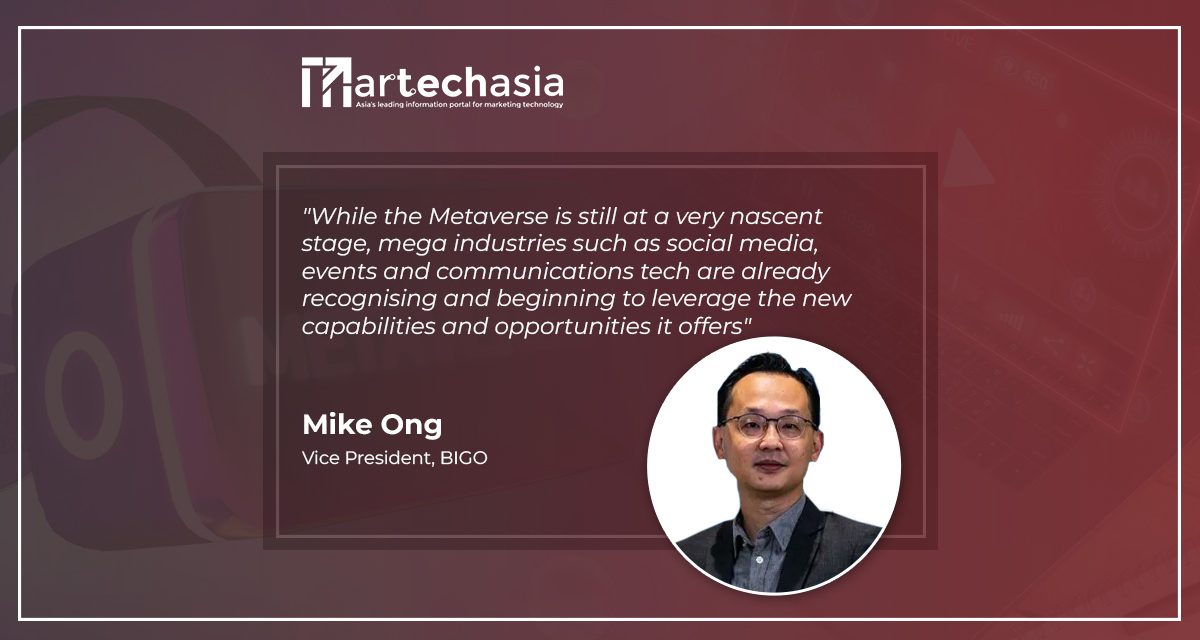Livestreaming will be an important gateway to exploring and developing the full potential of the Metaverse.
Facebook’s recent announcement of shifting from being a social media company to a ‘Metaverse’ company and changing its corporate name to ‘Meta’ has created huge waves in the social tech landscape. The Metaverse has sparked many conversations around its potential as the next evolution of a digital world, and news like these indicate that tech giants are starting to make real inroads into realising that potential.
So, just what is the Metaverse? On the surface, it’s an online replica of the real world in a 3D digital environment. The idea is that people can access this virtual world through augmented reality (AR) and virtual reality (VR), and they can ‘live online’ as digital avatars that can interact with one another. But the Metaverse isn’t just a digital replica. In the Metaverse, your virtual self represents an actualisation of your ideal persona that complements, not replaces, the physical self. Similarly, Metaverse interactions aren’t a substitute for real-world interactions – they’re an extension.
The boundaries between the digital and physical worlds have been blurring for years, especially with the growing mainstream appeal of live e-commerce, online social gatherings and online gaming, and the Metaverse is seen as the culmination of this shift. Interactive experiences are crucial to the Metaverse’s success, and livestreaming platforms, which have already successfully bridged that gap in the real world, hold the key to taking Metaverses to the next level.
The role of livestreaming in the Metaverse
Dubbed as the new frontier of social media, the livestreaming industry, which is expected to be valued at US$70 billion by the end of this year, has grown by leaps and bounds in terms of participation rate. The industry has clocked in 8.8 billion hours streamed in the first quarter of 2021 alone, owing to the growing presence of the creator economy and accelerated digitalisation. As such, livestream-centric platforms are reaping great rewards in both growth and user engagement.
As a tech-first platform, livestreaming hosts important technological tools like artificial intelligence (AI), AR and VR, which are the crucial building blocks of the Metaverse. It can serve as a gateway to full VR events where one can create completely online personas or digital ‘avatars’ to represent their likeness, or as an extension to their being. This integrates perfectly into the Metaverse, where fully virtual events allow for an unlimited audience and where avatar personas, with sophisticated technology that makes lifelike gestures and expressions possible, can foster an engaging co-presence that people can relate to.
Hybrid events represent an increasing convergence of the online and offline spaces, and this is where livestreaming shines – especially in the context of the Metaverse. As an online platform, livestreaming can be integrated with physical events as a useful tool to create hybrid interactions, regardless of location. Examples like VidCon or Streamer Award Ceremonies were well-attended and well-received, revealing the amplification potential of overlapping the real-world recognition of content creators with their online presence. The Metaverse can – quite literally – bring an additional dimension to these interactions.
Enhancing livestreaming applications for the Metaverse
With the right livestreaming platforms, we can decentralise access to content in real-time by making it easier, simpler and faster to participate in and experience the content regardless of where it comes from. Building on that technology, it’s not too far a stretch to suggest that the future of live events might mirror that on a far grander scale in the Metaverse. By connecting audiences across spatial barriers and limitations, the Metaverse makes shared experiences possible for millions of people and can even enhance the participatory element instead of being restricted through passive observation through a screen.
Technologies such as AI, VR and AR used in livestreaming can be further leveraged to create brand new experiences in the Metaverse. For example, ABBA’s reunion concert after 40 years will be a virtually livestreamed concert that employs advanced AR motion capture techniques to create virtual, lifelike copies of the band, and using AI to “de-age” the performers. Another example includes the more recent Ariana Grande, Travis Scott and Marshmello in-game live music concert on the popular survival game, Fortnite. While entertainment is the most obvious use case, these technologies can be applied to just about any type of event with an audience, such as lectures, conferences, conventions and more.
One more interesting Metaverse application of livestreaming is in the field of education. Livestreaming was widely used for teaching and learning, especially during the pandemic. If paired with volumetric video, which records an object or space in 3D in real-time, livestreaming could potentially transform the learning experience within the Metaverse. Students could expand molecules to examine and learn about them. Or walk through the human body and understand biology. The possibilities are endless.
The dawn of a new era in ‘social media’
Digitalisation is constantly changing the world, especially in the ways that we interact with our surroundings and with each other. The rise of livestreaming during the 2020 pandemic has shown that content creation and consumption are not exclusive to just the physical world. Both creators and consumers have a hand in building a shared virtual space, and this is integral to shaping a functioning Metaverse.
While the Metaverse is still at a very nascent stage, mega industries such as social media, events and communications tech are already recognising and beginning to leverage the new capabilities and opportunities it offers. Combined with other innovative technologies, livestreaming will be an important gateway to exploring and developing the full potential of the Metaverse, but one thing is certain: the Metaverse is here to stay.



















